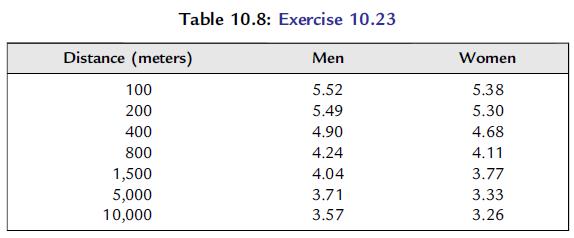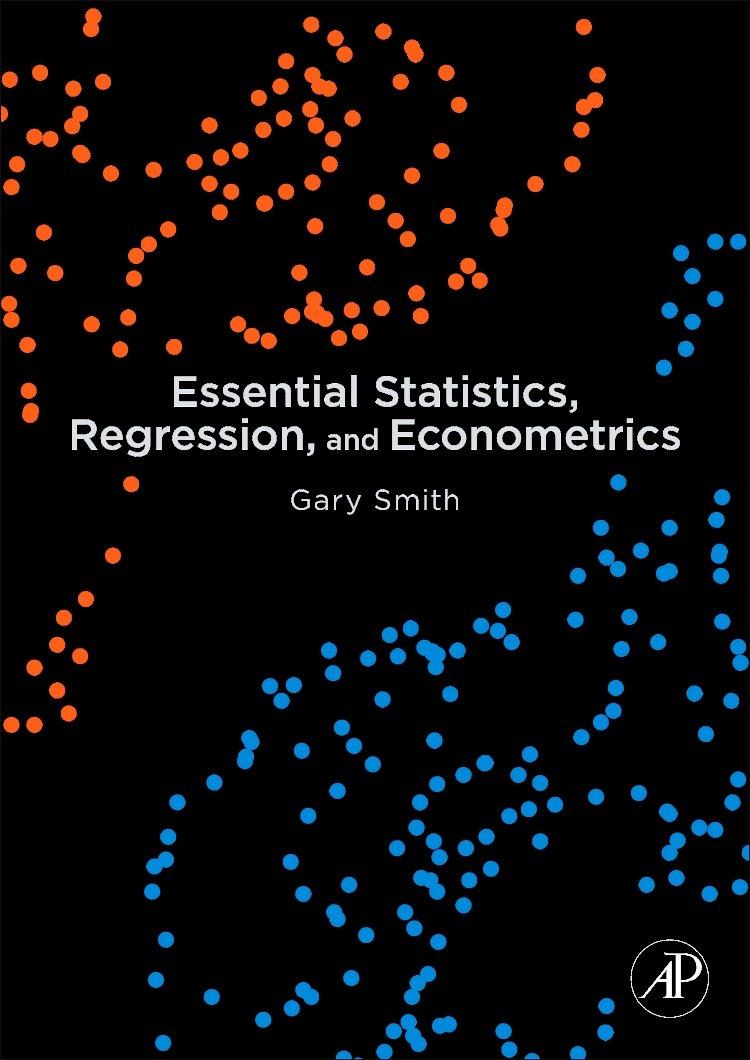On average, men are taller than women and therefore take longer strides. One way to adjust for
Question:
On average, men are taller than women and therefore take longer strides. One way to adjust for this height difference in comparing men’s and women’s track records is to divide the distance run by the runner’s height, giving a proxy for the number of strides it would take this runner to cover the distance. The division of this figure by the runner’s time gives an estimate of the runner’s strides per second. For instance, Leroy Burrell is a former world record holder for the 100 meters. Dividing 100 meters by his height (1.828 meters) gives 54.70, indicating that 100 meters takes 54.70 strides for him. For his world record time of 9.85 seconds, this converts to 54.70/9.85 = 5.55 strides per second. A study of the top three runners in several events over a 7-year period yielded the data in Table 10.8 on strides per second. Use these data to estimate a multiple regression model S = α + β1D + β2X + β3DX + ε, where S = strides per second, X = natural logarithm of distance, and D = 1 if a woman, 0 if a man. Are the estimated values of the following parameters statistically significant at the 5 percent level? Are the signs plausible?
a. β1.
b. β2.
c. β3.
Step by Step Answer:

Essential Statistics Regression And Econometrics
ISBN: 9780123822215
1st Edition
Authors: Gary Smith





